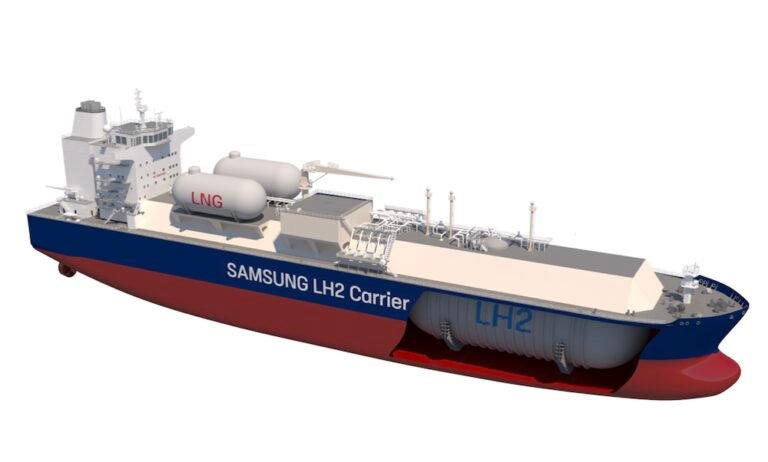The Slow but Steady Progress of Hydrogen as an Alternative Fuel Solution
10 for ambition, 5 for achievement. Hydrogen’s journey to alternative fuel solution at scale continues to be a slow one, but the tempo is changing, argues Mariam Tzannatos, hydrogen sector analyst at Maritime Strategies International.
Over the last few years, the narrative around clean hydrogen has shifted. Once a revolutionary replacement for fossil fuels, a succession of challenges and growing pragmatism mean it is now mainly viewed as a strategic solution for hard-to-abate sectors where other alternatives have limited potential.
As the title of the latest MSI Hydrogen report, Patchwork Progress, makes clear, the sector has continued an uneven transition from ambition to execution. Momentum in lowering costs has been slower than expected and projects taking Final Investment Decision (FID) are rare.
There has been incremental but uneven growth and challenges across different geographies and sectors, with shifts in the global economy affecting developments and shaping investment strategies. Blue hydrogen is witnessing more momentum than green, the latter tested by the high cost of renewables and electrolysers.
Despite project cancellations and regulatory uncertainty, pockets of genuine progress are visible with three ‘green corridors’ advancing within the first half of this year. Conversely, several projects supported by credible developers and offtakers have seen a reduction in targets or production delays.
The past six months have exposed both the opportunities and the persistent barriers to scaling the green hydrogen economy. Pressure is growing to support low-carbon sources, but costs and securing reliable demand remain obstacles.
Key sectors like fertilisers, shipping, and green iron and steel are showing early signs of progress, with some government subsidies and incentive schemes advancing. The next few months will determine which projects make it over the finish line, especially as major economies, including the US, scale back clean energy support.
Even if policymakers and regulators make hydrogen more competitive, demand will still be slow to materialise, suggesting a period of recalibration. Some sustainability regulations are being eased, while they are becoming stricter in other regions.
With such significant challenges ahead, expect overly ambitious projects to be cancelled or downsized while others begin production. Out of the 200 ammonia project announcements MSI tracks, approximately 70 are considered realistically executable by 2040.
No one could accuse the hydrogen sector of a lack of ambition, though its ability to deliver has been severely tested by first contact with the reality of the energy markets. Progress over the remainder of the decade will be an important indicator of its ability to match ambition with achievement.
The scaling back of ambition in the hydrogen/ammonia sector is set to have a major impact on the shipping industry.
From the industry’s perspective, the IMO (at least until recently), pilot projects, offtake agreements and green corridors are driving some progress, but this industry alone cannot build enough of a demand signal to stimulate the hydrogen sector, nor can it do enough to close the green cost premium.
Export availability from key regions is set to fall short of earlier expectations. Two countries provide the most dramatic examples of this trend, Australia and the US.
In Australia, the confidence collapse has been spectacular, with around 80% of proposed projects falling by the wayside. This may reflect that many original proposals were speculative at best, but the statistic is nevertheless dramatic.
The US had the advantage of the IRA, a product of the Biden era that promised to subsidise the production of blue and green hydrogen and its derivatives. This established US pricing as the global benchmark for green hydrogen against which the sector’s economics were measured.
The support from this legislation for green production has been severely curtailed, and the prospects for the sector are now in disarray. The US focus is now more than ever on blue ammonia, often with Japanese backing.
Another bright spot is India, which is achieving startlingly low costs for green ammonia production, with prices near parity with grey in one exceptional example. By 2030, this is considered likely to be the norm.
It should be noted that price parity with grey ammonia is a boon for fertiliser producers, but still not great for fuel consumers ($500 a ton for product translating into more than $1,000 a ton in VLSFO equivalent terms).
That suggests that in a properly functioning market, green ammonia would be used to produce fertiliser before being burnt as bunkers. It underlines the need for subsidies for green fuels for shipping via FuelEU and IMO regulations.
Even if the latter regulations can resolve the price conundrum, insufficient supplies remain the primary near-term worry for owners of ammonia-fuelled ships and vessels targeting the emerging clean ammonia trades.

